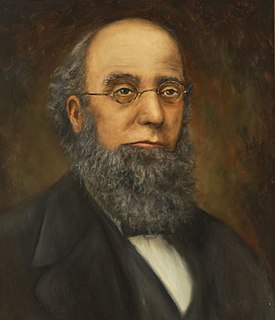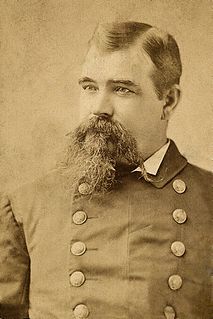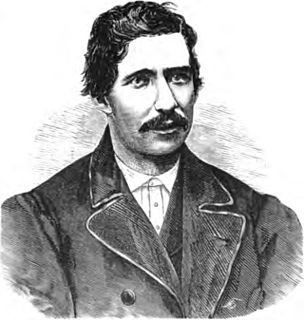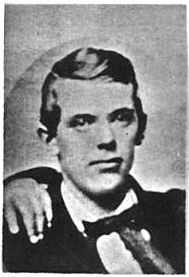Related Research Articles

Harrison Reed was an American editor and politician who had most of his political career in Florida. He was elected in 1868 as the ninth Governor of Florida, serving until 1873 during the Reconstruction era. Born in Littleton, Massachusetts, he moved as a youth with his family to Milwaukee, Wisconsin, where he had a grocery store and started farming. He also owned and edited the Milwaukee Sentinel for several years.
The Dutch Mob was a New York pickpocket gang during the late nineteenth century.

The Hook Gang was a street gang, and later river pirates, active in New York City in the 1860s and 1870s. The gang was prominent in the Fourth Ward and Corlear's Hook districts immediately after the American Civil War, until their breakup by the New York City Police Department in 1876.
The Five Families refers to five major New York City organized crime families of the Italian-American Mafia formed in 1931 by Salvatore Maranzano following his victory in the Castellammarese War.
Suds or SUDS may refer to:

The Whyos or Whyos Gang, a collection of the various post-Civil War street gangs of New York City, was the city's dominant street gang during the mid-late 19th century. The gang controlled most of Manhattan from the late 1860s until the early 1890s, when the Monk Eastman Gang defeated the last of the Whyos. The name came from the gang's cry, which sounded like a bird or owl calling, "Why-oh!"

Thomas Gaetano Lucchese, sometimes known by the nicknames "Tommy", "Thomas Luckese", "Tommy Brown" or "Tommy Three-Finger Brown" was an Italian-American gangster and founding member of the Mafia in the United States, an offshoot of the Cosa Nostra in Sicily. From 1951 until 1967, he was the boss of the Lucchese crime family, one of the Five Families that dominate organized crime in New York City.

Frank McErlane (1894–1932) was a Prohibition-era Irish American gangster. He led the Saltis-McErlane Gang, allied with the Johnny Torrio-Al Capone Gang, against rival bootleggers, the Southside O'Donnell Brothers. He is credited with introducing the Thompson submachine gun to Chicago's underworld. The Illinois Crime Survey called him "the most brutal gunman who ever pulled a trigger in Chicago."

Hi'-Neighbor! is a 1934 Our Gang short comedy film directed by Gus Meins. Produced by Hal Roach and released to theaters by Metro-Goldwyn-Mayer, it was the 126th Our Gang short to be released and Meins' first series entry as director.

The Little Ranger is a 1938 Our Gang short comedy film directed by Gordon Douglas. It was the 169th short in the Our Gang series, and the first produced by Metro-Goldwyn-Mayer, who purchased the rights to the series from creator Hal Roach.
Henry D. Neuman or Neumann was a German-born American burglar, bank robber and gang leader known as Dutch Heinrichs. A member of Chauncey Johnson's burglary gang during the late 1860s, he was also the founder of the Hell's Kitchen Gang which terrorized West Manhattan for over two decades.
The Baxter Street Dudes was a New York teenage street gang, consisting of former newsboys and bootblacks, who ran the Grand Duke's Theatre from the basement of a dive bar on Baxter Street during the 1870s. Led by founder Baby-Face Willie, gang members operated the Grand Duke's Theatre and established the venue as their headquarters. Members of the Baxter Street Dudes wrote and performed plays, musicals and variety shows which were enjoyed by other street toughs and slummers throughout the city. The theater house eventually became a popular underworld hangout, from which the gang found financial success.
Hester Jane Haskins or Jane the Grabber was an American madam, procuress, and underworld figure in New York City during the 1860s and 1870s. The main rival of Red Light Lizzie, she owned and operated several "houses of ill fame" as well being a chief supplier of prostitutes to bordellos, brothels, and similar establishments throughout the city. She employed a small group of "respectable-looking men and women", numbering a dozen or so, who traveled New England luring young women with promises of exciting jobs back in New York. Once these women arrived, they were abducted and forced to work in her or her clients' establishments.

George W. Gastlin born George Washington Gastlin was an American law enforcement officer and police captain, with the New York City Police Department, who founded the "Steamboat Squad" and served as its commander, during the 1870s and 80s.

Patrick Conway, commonly known by his alias Patsy or Patsy Conroy, was an American burglar and river pirate. He was the founder and leader of the Patsy Conroy Gang, a gang of river pirates active on the New York waterfront in the old Fourth Ward and Corlears' Hook districts during the post-American Civil War era.

The Patsey Conroy Gang or Patsy Conroys were a group of river pirates active along the New York City waterfront of the old Fourth Ward during the post-American Civil War era. For nearly twenty years the Patsy Conroys dominated the area of Corlears' Hook and were one of the last major waterfront gangs to remain in the district prior to the formation of the George Gastlin's Steamboat Squad of New York City Police Department. The Patsey Conroy Gang abruptly disappeared when their leaders Patsy Conroy, Larry Griffin and Denny Brady were imprisoned in 1874.
Christopher Keyburn, commonly known by his alias Kit Burns, was an American sportsman, saloon keeper and underworld figure in New York City during the mid-to late 19th century, he and Tommy Hadden being the last-known leaders of the Dead Rabbits during the 1850s and 60s.
Red Light Lizzie was the pseudonym of an American madam, procuress and underworld figure in New York City during the mid-to late 19th century.

Samuel "Worcester Sam" Perris was a 19th-century French-Canadian burglar, safe cracker and bank robber. An underworld figure in New York City and throughout the northeastern United States during the post-American Civil War era, he was called "one of the most notorious criminals in America".
Merrick or Merick is a surname. Notable people with the surname include:
References
- ↑ Sante, Lucy. Low Life: Lures and Snares of Old New York. New York: Farrar, Straus & Giroux, 2003. (pg. 205) ISBN 0-374-52899-3
- ↑ Asbury, Herbert. The Gangs of New York. New York: Alfred A. Knopf, 1928. (pg. 76) ISBN 1-56025-275-8
- ↑ Kohn, George C. "Suds Merrick". Dictionary of Culprits and Criminals. Metuchen, New Jersey: Scarecrow Press, 1986. (pg. 242) ISBN 0-8108-1877-9
